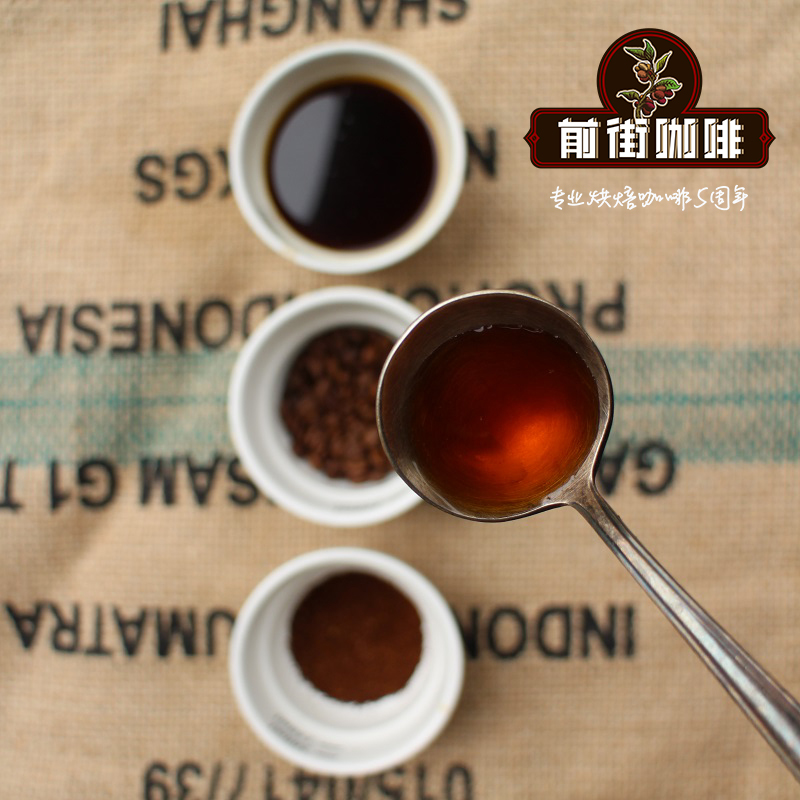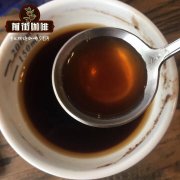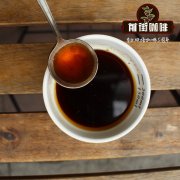Ecuador | the cooking and flavor of Arabica beans in organic sun in the producing area of Chamora, Chinchipe province.

Professional coffee knowledge exchange more coffee bean information please follow the coffee workshop (Wechat official account cafe_style)
Ecuador | what is the cooking and flavor of Arabica beans in organic solarization in the producing area of Chamora, Chinchi?
Ecuador, which passes through the equator between Colombia and Peru, is one of the few countries in South America that produces both Arabica and robusta coffee. In fact, Ecuador means "equator" in Spanish. Due to the use of old-fashioned traditional harvesting and handling methods, Ecuadorian coffee is not included in the list of boutique coffee, so it is generally rare and unfamiliar. Ecuador faces the Pacific Ocean, and near the equator, about 900km west of longitude 90 degrees, Ecuador is also dependent on the Galapagos Island Islands, also known as Cologne, which produces the well-known Galapagos coffee. In order to protect the natural ecology, the Ecuadorian government has designated the archipelago as a national park and banned the use of chemical fertilizers, pesticides and other chemicals, so coffee in the Galapagos Islands is recognized as organic coffee. Galapagos Islands coffee flavor is more balanced and neutral, moderately mellow, with a little obvious but pleasant acidity, with a special aroma. However, because it is rarely seen on the market, not many people talk about this coffee.
The Arabian Coffee Tree was first introduced to Ecuador (Ecuador) in 1952 and its coffee is of good quality, especially the coffee harvested in early June. Ecuador coffee beans can be divided into two varieties: Galapagos and Gigante, both of which have the characteristics of large granules and heavy weight. Ecuadorian coffee can be divided into first class according to quality (No. 1) and Extra Superior. They are mainly exported to the Nordic countries of Scandinavia.
The main problem facing coffee producers is their efforts to maintain stable quality. The coffee here is generally well-balanced and refreshing, with a unique aroma.
Ecuador is one of the few countries in South America that produces both Arabica and Robbins. However, as the land suitable for Arabica coffee trees is decreasing, the production of Robbins coffee is gradually increasing. The best Arabica coffee comes from the Andes, especially the Chanchagu Valley (ChanchamgoValley), which is divided into two mountains, extending from south to north to central Ecuador.
The coffee comes from a small organization on Ecuador's southern border with Peru and belongs to a larger group that has won high rankings and first prizes in Taz Dorada competitions many times because of its top leadership and one of the best positions in Ecuador's coffee market.
Coffee farmers in the region still grow traditional varieties of coffee, such as Tibika, Katura and bourbon, which is also the key to their success. Leaf rust has always been the biggest headache for these coffee farmers, coupled with the relationship between organic certification, which greatly limits the products that can be used to deal with leaf rust, making the problem even more difficult. The climate of this area has its own style, which is very special. It is humid throughout the year and the temperature changes are suitable. The average temperature is 20 degrees Celsius. This climate is very suitable for growing coffee, which is also reflected in the flavor of coffee.
Shade-growing coffee is to interplant coffee with other different tree species and crops in the coffee garden in a way that maintains the original ecological appearance and does not destroy the biosphere. It looks like a small-scale forest reserve. For Ecuador, which is located on the equator, ecological conservation is of great significance, because coffee farmers do not need coffee to cut down trees, and the role of coffee trees is just the tree species in the middle of the shade ladder. It also reserves more habitats for birds and other creatures. Because coffee trees are shaded by other tall tree species, the coffee fruit is generally rich and mellow, which is a good choice for consumers to protect the ecology and enjoy delicious food.
The ecologically green Ecuadorian Loha Yinzai coffee has a rather rustic and balanced taste. At the beginning of the entrance, you will feel that none of the flavors are particularly prominent, but when Huigan appears, you will find a hint of cereal flavor (what we call biscuit flavor) and acidity. But the acid is not as clear and transparent as Kenya or Hawaiian Kona, but has the taste of rose or chamomile tea, even with floral aromas. It is suitable for friends who love Brazil and want to drink a better taste than Brazil.
Coffee farmers in southern Ecuador own an average of 1.5 hectares of small farms per person, while there are more large farms in the north Most southern farms are organic and produce a wide variety of products, including flowers, corn, kale, bananas, bees, cattle, fish, fruit and coffee. At present, the most difficult challenge for coffee farmers is leaf embroidery disease, which has reduced Colombia's coffee production by 50% in recent years. The easiest way to eliminate leaf embroidery disease is to use chemicals, but coffee farmers treat it in an organic but difficult way for the sake of environmental protection. In addition, in Ecuador, because of the lack of fertilization, plants are very deficient in nutrients, which also affects the quality of coffee and the growth of coffee inner shell and raw beans.
The farms in the north are large, with an average of 15 hectares or more, cultivated with traditional fertilizers and fully developed; the area is lush and very humid, coupled with warm summers, and the conditions are perfect for growing coffee; it is a very interesting place with ancient local aboriginal graveyards, vineyards and experimental farms run by NESPRESSO.
Origin: Ecuador
Production area: Erzamora-Chinchipe province, Zumba city
Farm: multiple small coffee farmers
Coffee variety: Arabica
Altitude: 1300 Murray 1900m
Raw bean treatment: washing treatment, drying in the sun on the farm
Coffee flavor: taffy and walnut flavor with citrus acid
Qianjie recommended cooking:
Filter cup: Hario V60
Water temperature: 90 degrees
Degree of grinding: small Fuji 3.5
Cooking methods: the ratio of water to powder is 1:15, 15g powder, the first injection of 25g water, 25 s steaming, the second injection to 120g water cut off, waiting for the powder bed water to half and then water injection, slow water injection until 225g water, extraction time about 2:00
Analysis: using three-stage brewing to clarify the flavor of the front, middle and back of the coffee. Because V60 has many ribs and the drainage speed is fast, it can prolong the extraction time when the water is cut off.
Important Notice :
前街咖啡 FrontStreet Coffee has moved to new addredd:
FrontStreet Coffee Address: 315,Donghua East Road,GuangZhou
Tel:020 38364473
- Prev

Why is Rosa coffee so expensive? The source of rose summer coffee how should I drink rose summer coffee?
Professional coffee knowledge exchange more coffee bean information Please pay attention to the coffee workshop (Wechat official account cafe_style) when I heard about Rosa coffee beans, I thought Kyoto also began to grow coffee. Haha, this is a big mistake. In fact, Rosa coffee beans, the original text Geisha or also known as Gesha, happens to be synonymous with Japanese Rosa, so it is called it in Chinese, in fact with Japan.
- Next

What are the brands of Rosa Coffee? What are the characteristics of Rosa coffee? How to bake Rosa coffee
Professional coffee knowledge exchange more coffee bean information please follow the coffee workshop (Wechat official account cafe_style) 90 + NINETY PLUS JULIETTE Juliet Rosa (H2 honey treatment) in the Panamanian Rosa Manor, there is a road leading to the Solkiln treatment area, on both sides of the road is covered with Datura, these mandala flower bags like wind chimes, will be in the evening
Related
- Detailed explanation of Jadeite planting Land in Panamanian Jadeite Manor introduction to the grading system of Jadeite competitive bidding, Red bid, Green bid and Rose Summer
- Story of Coffee planting in Brenka region of Costa Rica Stonehenge Manor anaerobic heavy honey treatment of flavor mouth
- What's on the barrel of Blue Mountain Coffee beans?
- Can American coffee also pull flowers? How to use hot American style to pull out a good-looking pattern?
- Can you make a cold extract with coffee beans? What is the right proportion for cold-extracted coffee formula?
- Indonesian PWN Gold Mandrine Coffee Origin Features Flavor How to Chong? Mandolin coffee is American.
- A brief introduction to the flavor characteristics of Brazilian yellow bourbon coffee beans
- What is the effect of different water quality on the flavor of cold-extracted coffee? What kind of water is best for brewing coffee?
- Why do you think of Rose Summer whenever you mention Panamanian coffee?
- Introduction to the characteristics of authentic blue mountain coffee bean producing areas? What is the CIB Coffee Authority in Jamaica?

